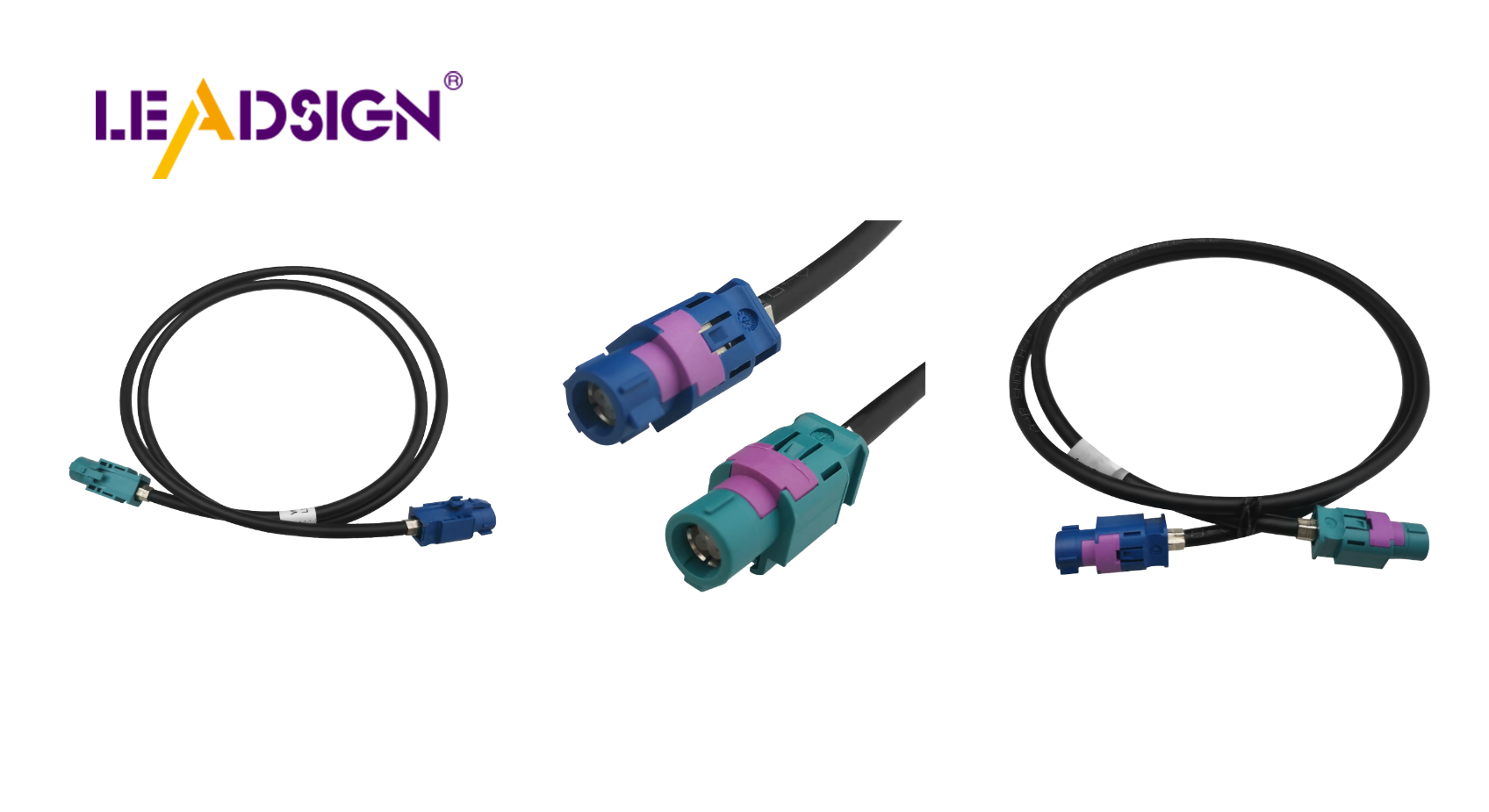Understanding Automotive Wiring Connector Types

Automotive electrical connectors types play a crucial role in vehicles, ensuring that electrical components function seamlessly together. Without these connectors, systems can easily fail. Exposed wires and rigid connector covers can lead to issues. Automotive connectors undergo extensive testing to comply with manufacturer standards. This rigorous testing ensures their durability and reliability in vehicles, maintaining strong connections, preventing failures, and enhancing overall vehicle performance.
Automotive electrical connectors are key for cars to work well. They help send electric signals and power through the car's parts. Knowing different connector types helps pick the right one, keeping things safe and reliable.
Blade connectors are common in cars. They have a flat metal piece that fits into a slot.
Blade connectors give a strong connection, great for many car uses. They're used where you need to disconnect quickly, like fuse boxes. Their design makes them easy to use and fix.
Many companies make good blade connectors. TE Connectivity and Molex are known for their strong products. These companies make sure their connectors meet standards, so users feel safe.
Pin connectors are also popular in cars. They have a pin that fits into a socket for a secure link.
Pin connectors are precise and reliable. They're used where accuracy is needed, like engine controls. Their tough design handles shakes and other conditions.
Top makers like Delphi and Amphenol create pin connectors used in cars everywhere. These companies focus on new ideas and quality, making sure their products work well in different situations.
Butt connectors join two wires together easily in cars. They offer a simple way to connect wires.
Butt connectors are made for quick wire connections by crimping them together. They're perfect for car lights or any wire project at home or workspaces. These ensure good connections, making them popular choices.
Companies like Pico and 3M make butt connectors from top materials. They're easy to crimp and hold wires tight for solid links. Available in all common wire sizes, they fit many needs.
Automotive wiring connectors have special features. These make them work well and last long. Knowing these helps pick the right one for cars.
What They're Made Of
Conducting Electricity and Lasting Long
Connectors use metals like copper or brass. Some have a lot of silver. This helps electricity flow easily in cars. More silver means better flow. Good flow keeps car parts working well.
Connectors also need to be tough. They face bumps, heat changes, and stress in cars. Makers design them to handle this, so they last long and stay safe.
Fighting Off Bad Stuff
Connectors deal with water, dirt, and chemicals. These can hurt how they work. So, makers use materials that don't rust or break down easily. When different metals touch with water around, they can get damaged. Choosing the right materials stops this damage and keeps connectors working longer.
How They're Built
Different Sizes and Shapes
Connectors come in many sizes and shapes for different uses in cars. Some are small to fit tight spots; others are big for strong jobs. This variety helps meet all car needs.
Fitting Different Wire Sizes
Connectors must fit wires of all thicknesses well to work right. Makers design them to hold different wire sizes tightly. This makes sure they can be used from tiny gadgets to big power parts in cars.
Installation Tips
Putting in car wiring connectors right makes them work well. This part shows the tools you need and steps to follow.
Tools You Need
To put in car wiring connectors, you need special tools for a strong hold.
Crimping Tools
Crimping tools are key for joining wires and connectors tightly. They press the connector onto the wire for a snug fit. Crimping is fast and easy, so it's used a lot in cars. Pick a crimping tool that fits your connector and wire size best.
Soldering Stuff
Soldering stuff means a solder iron and solder wire. Soldering sticks the wire to the connector well. It's slower than crimping but lasts longer sometimes. Be careful with solder tools to not overheat wires, which can weaken them.
How to Install Step-by-Step
Doing things step-by-step helps make sure connections are tight and work well.
Getting Wires Ready
Take Off Insulation: Use a stripper to remove 1/4 inch of insulation from each wire end. Don't cut or hurt the strands.
Twist Strands Together: Twist bare strands so they don't fray and connect better.
Putting on Connectors
Pick Connector: Choose one that fits your wire size and needs.
Crimp Connector: Put stripped wire into connector, then use crimper to press it tight.
Solder Connection (If Needed): For extra hold, add solder to connection by heating with iron until it flows into strands without too much heat.
Checking Connection
Look at Connection: Check if it's tight and has no problems.
Pull Test: Gently pull wire to see if connector stays on strong.
Check Electricity Flow: Use multimeter to make sure electricity goes through fine without stopping.
By following these tips and using right tools, you can make strong connections in car wiring systems that last long and work great.
Picking the right car wire connector is very important. It keeps the car's electric system working well. Choosing correctly makes sure it lasts long and works great. Each connector type has a special job, making the car run better.
Putting in wire connectors right is key for safe and good connections. By doing it correctly, you can keep connections safe from problems. Use tools like an ohmmeter to check your work and stop future troubles. Picking and putting in connectors well helps cars work their best for a long time.
See Also
Exploring HSD Connectors in the Auto Sector
Significance of Fakra Connectors in Contemporary Cars
Navigating Ford's Fakra Connector System

